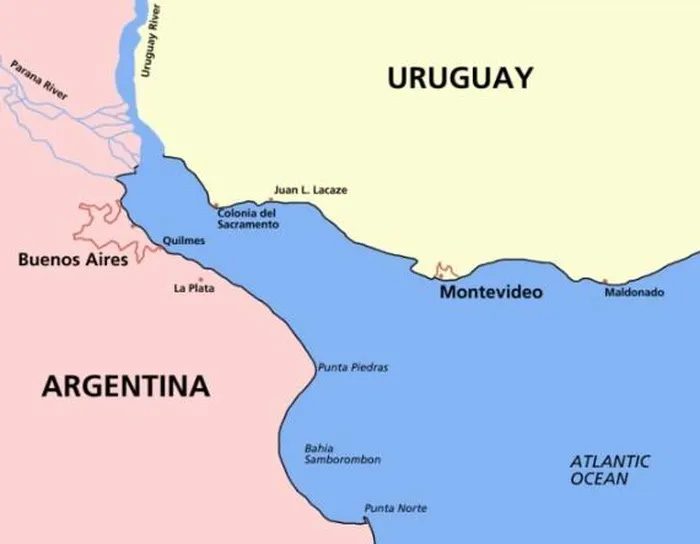Perhaps everyone knows that the Nile River is the longest river in the world, but when it comes to the widest river, not everyone is aware.
The widest part of a river is typically its estuary, where the water flow is particularly large and has been encroached upon by water over time, resulting in a unique landscape resembling a trumpet.
The maximum width of the Yangtze River—the longest river in Asia—is 90 km, while the maximum width of the Amazon River exceeds 200 km. However, these rivers share a common trait: they are quite narrow.
In terms of width, there is a relatively short river in the world that has the largest drainage area. This is the La Plata River at the confluence of Argentina and Uruguay. The total length of this river is only 4,100 km, making it over 2,000 km shorter than the Yangtze River. The basin area of the La Plata River is 4 million km2, which is more than twice that of the Yangtze River. This river flows through Brazil, Bolivia, Paraguay, Uruguay, and Argentina.

The La Plata River at the confluence of Argentina and Uruguay.
The drainage basin of this river, along with the basins of its tributaries, has a total area of about 3,200,000 km2, approximately one-fifth of the surface area of the American continent.
This system primarily includes the Paraná and Uruguay rivers, contributing 97% of the total discharge, with average annual flows of 16,000 and 4,000 m3.
The river was discovered in the 15th century when a Spanish explorer brought his fleet to Uruguay. At that time, explorers found the seawater here to be very murky. Out of curiosity, the explorer took a sip of water and discovered that it was actually fresh water. Due to the lack of advanced technology and no satellite maps, they could not perceive the full picture of this river.
Due to the unique geographic location of this river and its vast width, geologists in many countries struggled for a long time to define it, often questioning whether it should be classified as a river at all. The debate surrounding this river persists because of its extensive basin area, leading many to argue that it is a sea. However, regardless of the debates, for the people of these two countries, this river is regarded as their “mother river.”
It is notable that this is one of the most polluted rivers in the world. The La Plata River is affected by factors such as loss of vegetation cover, urban accumulation, intensive agriculture, road construction, mining, industry, and, in general, population and economic growth in the region.


















































